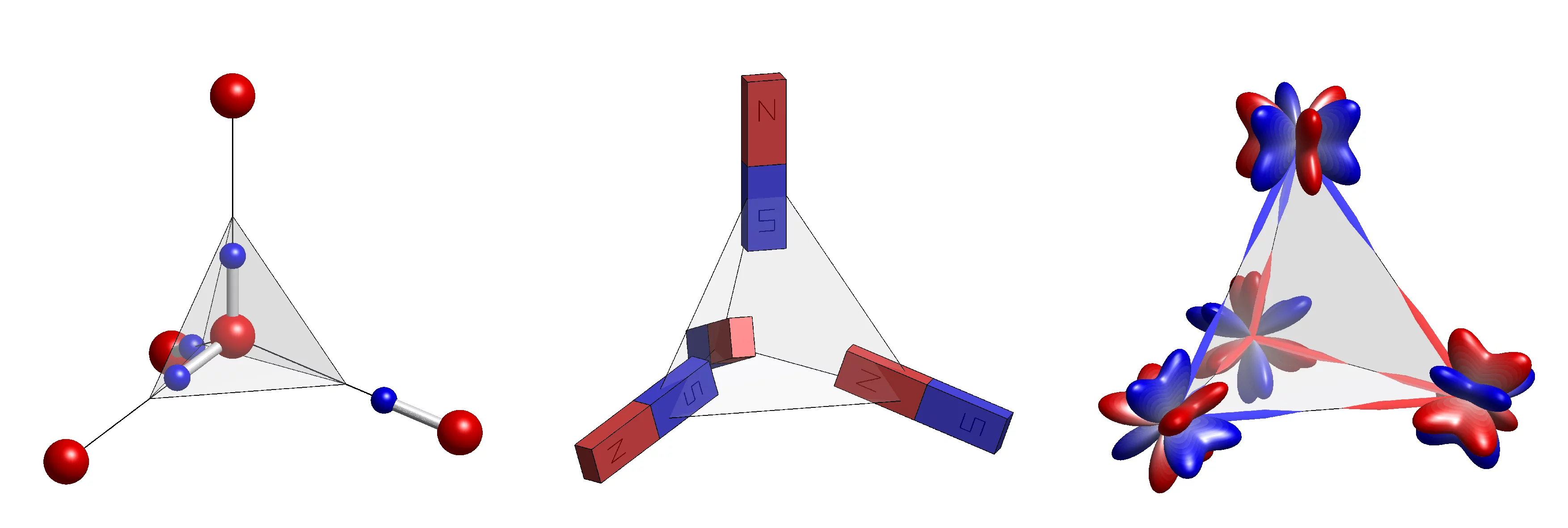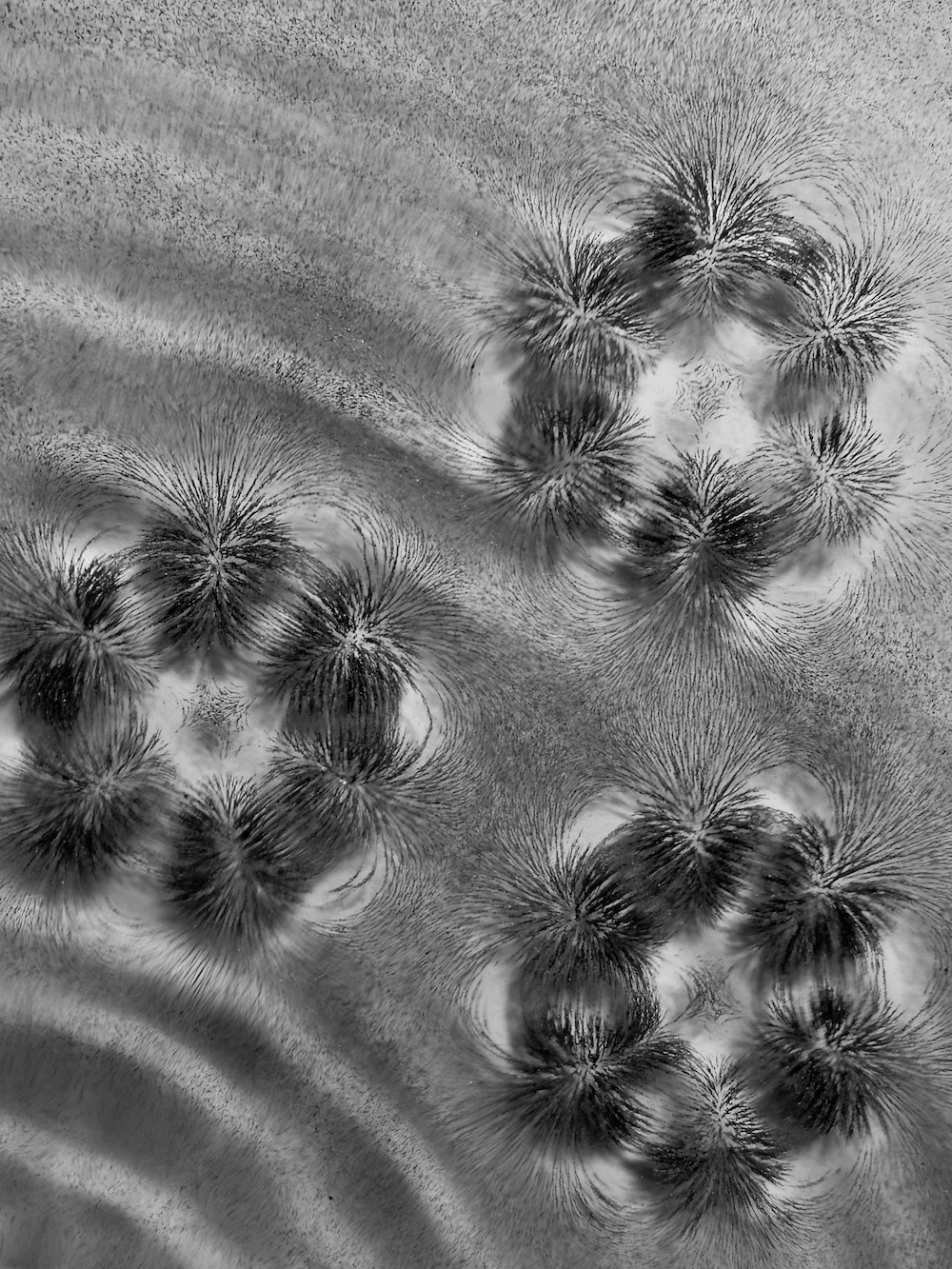With experimental work demonstrating that the correlated ground state of the pyrochlore system Ce2Sn2O7 is a quantum liquid of magnetic octupoles, an international team led by PSI researcher Romain Sibille establishes a fundamentally new state of matter: higher-rank multipole ice.
Spin ice is an intriguing state of matter. If magnetic moments are suitably arranged in a crystal structure — most famously in the form of rare-earth ions on a pyrochlore lattice — they can be subjected to frustrated interactions that obey so-called ice rules. As a consequence, the magnetic system remains disordered down to zero temperature, in direct analogy to the residual entropy seen in water ice due to proton disorder (see figure below). In spin-ice materials, the magnetic moments behave effectively as classical Ising spins. An international team led by PSI scientist Romain Sibille now present results that in several ways break away from this paradigm. Writing in Nature Physics [1], they report the first magnetic ice state formed not by dipoles, but by higher-rank degrees of freedom, octupoles. They go on and provide strong evidence that the octupole-ice state they have discovered is a peculiar type of quantum spin liquid and demonstrate that in this system, remarkably, higher multipolar interactions define the phase behaviour.
A new role for dipoles
Sibille et al. studied the pyrochlore stannate Ce2Sn2O7, a system they have established before as a candidate for a quantum spin liquid [2]. In that earlier work, magnetization and muon-spin-relaxation (mSR) measurements suggested an unusual ground state with signatures of a quantum spin liquid. Now, they provide deep insight into the microscopic origins of that state — and unearthed even greater surprises.
Examining a Ce2Sn2O7 powder sample in neutron facilities at PSI, ISIS (UK) and ILL (France), the team showed that the ground-state wavefunction has contributions from both magnetic dipole and magnetic octupole moments. In diffuse-scattering experiments, the two contributions can be clearly distinguished. Using that capability, the researchers found that the dominant interaction in their system is octupole–octupole coupling. However, weak but non-vanishing dipole–dipole interactions are present as well. This is important, as such additional interactions are known to be necessary to stabilize a quantum spin ice, by way of mediating transverse exchange.
Instead of driving the spin-ice phase, as in ‘traditional’ spin-ice systems, the dipole–dipole coupling has therefore an auxiliary role in Ce2Sn2O7. Its presence is central, nonetheless, and not only to stabilize the quantum-spin-liquid ground state. The dual dipole–octupole nature of the degrees of freedom means that the properties and behaviour of the system can be controlled with magnetic fields. Moreover, Sibille and colleagues showed that the relative contributions of dipole and octupole moments to the ground-state wavefunction depend on temperature. Taken together, these two ‘knobs’ on the dipole–octupole quantum object open up intriguing prospects with a view to exploring the rich physics of these quantum many-body systems.
High-rank rarities
That a state is primarily driven by multipolar interactions is rare, and the octupole ice now discovered is unique among those rarities in that it exhibits also topological order (the experimental results obtained are consistent with the recent prediction of a topological phase in three dimensions, known as the U(1) quantum spin liquid, in Ce2Sn2O7). Higher multipolar interactions are known or conjectured to be the key to understanding a wider range of ‘hidden’ orders in condensed-matter systems, from heavy-fermion materials to, potentially, high-transition-temperature superconductors. Bringing together, as Sibille et al. just did, this area of research with the intriguing world of ‘ice physics’, and quantum spin liquids more generally, holds the promise to open up fresh perspectives — and possibly unexpected applications in the lively arena of quantum technologies.
This work was carried out in close collaboration between researchers in the Laboratory for Neutron Scattering and Imaging at PSI and colleagues at the SLAC National Accelerator Laboratory and Stanford University (US), and the Université Grenoble Alpes and CEA Saclay (France). Key experiments of this work were performed using the powder diffractometer HRPT at the Swiss Spallation Neutron Source SINQ and other neutron instruments, involving colleagues at the Institut Laue-Langevin (France) and the STFC Rutherford Appleton Laboratory (UK).
Facility: SINQ
Reference: R. Sibille et al, Nature Physics, 23 March 2020 (online)
Read full article: here



